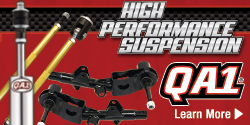- Local time
- 4:27 PM
- Joined
- Jan 14, 2009
- Messages
- 2,159
- Reaction score
- 1,754
- Location
- Shoreline, Washington
If fabricating replacements, any good quality insulting material should work as long as it can tolerate some heat. Just remember to account for the locating tabs/notches in the insulator that centers the ammeter stud pass-through in the cluster frame.If one wanted to replace a deteriorated amp gauge insulator, what type of material would you recommend and where would you purchase? I've found some glass-mat pcb material on ebay as well as thermal fiberboard, either can be cut to size. Your thoughts appreciated.
Haven’t seen these reproductions myself, but someone is making these based on the original design.
















